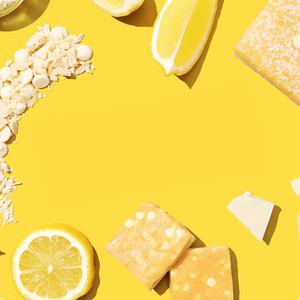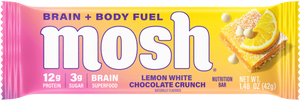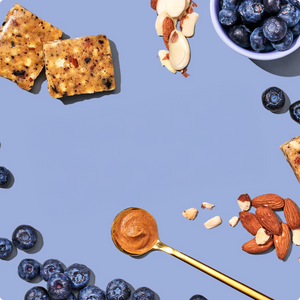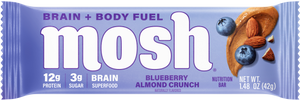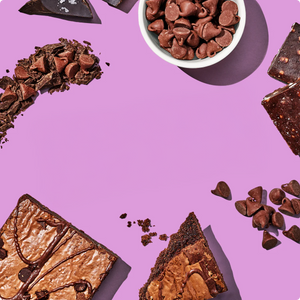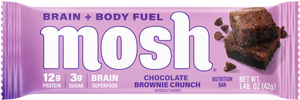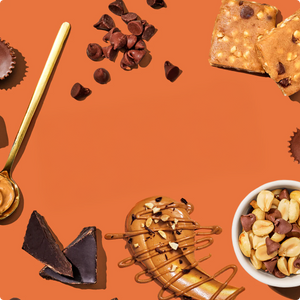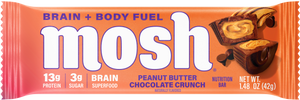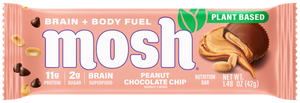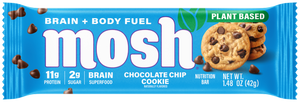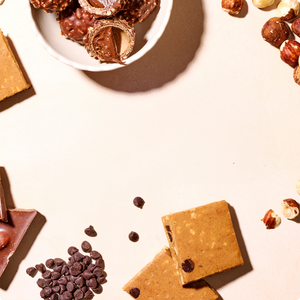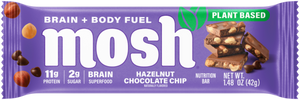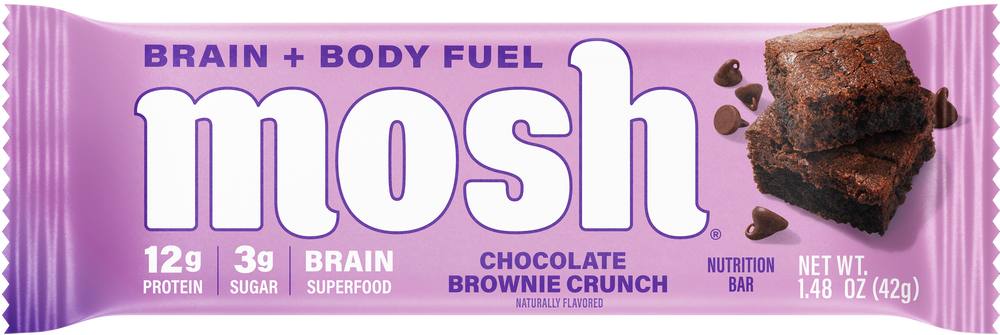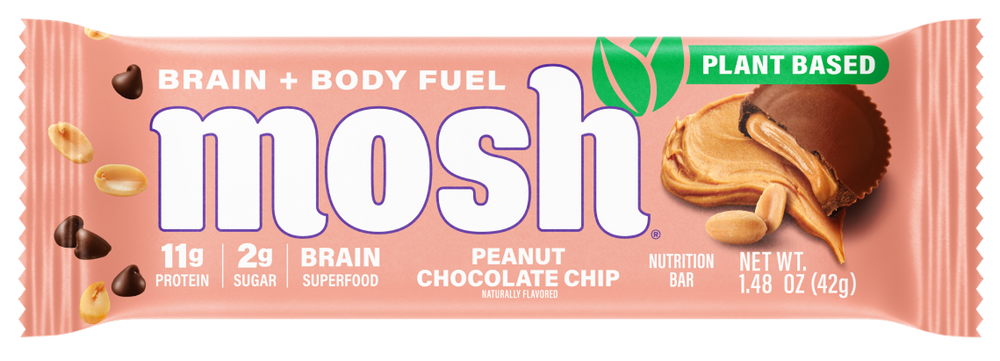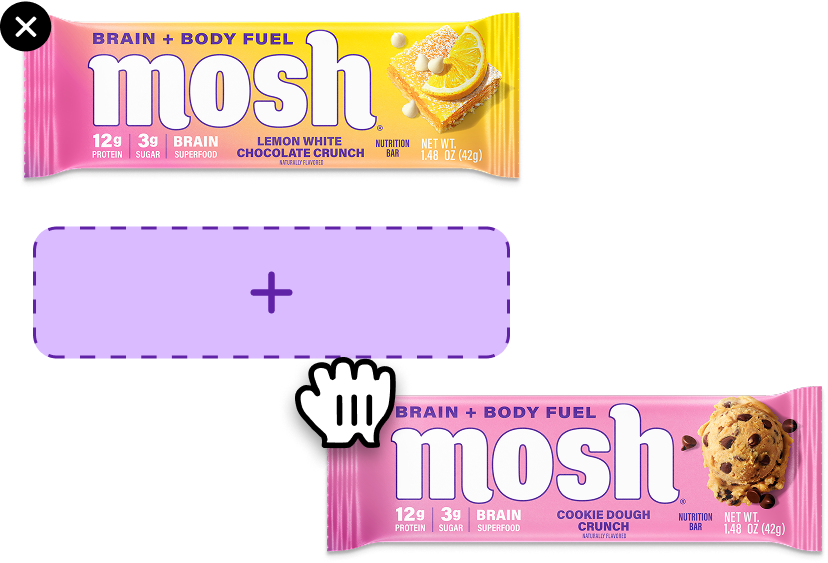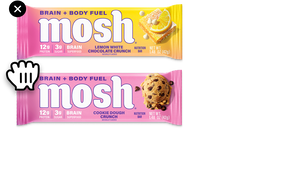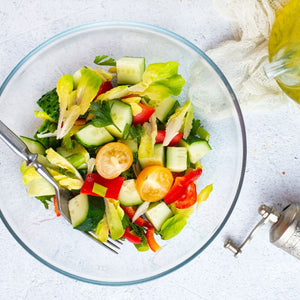The path to healthy living is a long journey. However, it all starts in the kitchen. The food you eat has a significant impact on your physical and mental well-being. Eating healthy foods will leave you feeling healthier and unhealthy foods and empty calories may leave you feeling sluggish.
There are many misconceptions about healthy eating. While there are some barriers on the way, you have plenty of ways to bypass them. You can eat healthy if you’re a picky eater, don’t know how to cook, or have an insatiable sweet tooth.
All you need to do to eat healthily is increase the number of nutrient-rich foods in your diet. Let’s dive into nutrient density and a list of foods to increase in your diet.
What Are Nutrients, Anyway?
Nutrients provide your body with energy and assist in essential bodily functions. Every living cell inside your body and brain requires a steady supply of these nutrients. Your cells' reproduction, growth, and function depend on the amount of nutrients you consume.
There are two distinct categories of nutrients: macronutrients and micronutrients. A well-balanced and healthy dietinvolves getting the appropriate amount of both.
Macronutrients include fat, protein, and carbohydrates,the primary fuel sources for the body. Dieticians recommended a daily average of 44-78 grams of fat, 46-56 grams of protein, and 225-325 grams of carbohydrates. Different diets may call for more or less of each macronutrient, but you can build your meals around these three substances.
Micronutrients are various vitamins and minerals that assist with energy production and play crucial roles in essential bodily functions. There are tons of different micronutrients, but they fall into four categories: water-soluble vitamins, fat-soluble vitamins, macrominerals, and trace minerals.
With so many different types, meeting your daily requirements of micronutrients can be difficult. However, there are plenty of foods that can help you to reach your dietary goals.
40 Foods That Are High in Nutrients
Health experts estimate that around 10 percent of Americans have nutritional deficiencies. The most common nutrients that people struggle to get are calcium, potassium, fiber, iron, and vitamin D.
Here is a list of 36 foods that can help you meet your daily requirements for each of these nutrients and the others that you need for a balanced diet:
1. Acai Berries
Acai berries are a unique fruit in that they’re relatively high in fat and low in sugar. However, they’re loaded with a ton of minerals, including zinc, iron, copper, chromium, manganese, potassium, magnesium, and phosphorus. Additionally, they’re an excellent source of anthocyanins, a powerful antioxidant that gives acai berries their signature color.
2. Apples
Apples are well known for keeping doctors away as they feature several key nutrients. Perhaps the most important of these are polyphenols, potent antioxidants that can help protect against various diseases. If you factor in the high fiber concentration, vitamin C, potassium, copper, and vitamin K, you’ll see why apples got their medical reputation.
3. Asparagus
Asparagus is a very good source of fiber when compared to its low-calorie count. More importantly, it’s loaded with vitamin C, potassium, vitamin A, phosphorus, folate, zinc, and vitamin E. Asparagus is especially high in vitamin K, which helps to create various proteins required for blood clotting and bone building.
4. Artichokes
Artichokes are often mistaken as a vegetable. In fact, they’re classified as a type of thistle, making them unique in the culinary world. They make this list because they’re high in fiber, protein, folate, copper, magnesium, vitamin C, niacin, phosphorus, and riboflavin.
5. Avocados
Avocados are one of the best sources of healthy fats that you can eat. This anti-inflammatory superfood is also packed with potassium, fiber, and folate. Very few foods are as beneficial for your heart health as avocados.
6. Barley
Barley is a very commonly consumed grain in most diets, which makes sense when you learn its nutritional value. This whole grain is an excellent source of fiber, selenium, copper, chromium, phosphorus, and magnesium. It’s also a good source of manganese which helps with bone formation, immune responses, and carbohydrate metabolism.
7. Beets
Beets aren’t the most popular food on this list, but they’ve earned their place. The primary benefit of beets comes in the form of nitrates. When you eat nitrates, your body will convert them into nitric oxide.
Nitric oxide can help to regulate your circulation, potentially improving your blood pressure, heart health, and athletic performance. Beets are also very high in folate,potassium,vitamin C, manganese, and vitamin A.
8. Bell Peppers
Bell peppers are one of the best sources of vitamin C right alongside citrus fruits. Vitamin C is extremely important for limiting the cellular damage of free radicals. Additional nutrients provided by bell peppers include fiber, vitamin A, potassium, vitamin E, folate, and vitamin K.
9. Black Beans
Black beans are among the most frequently consumed legumes. These dried pulses are packed with protein, fiber, folate, thiamine, manganese, iron, phosphorus, potassium, and magnesium. Another key benefit is they're high in copper, which is crucial for producing energy, connective tissues, and blood vessels.
10. Broccoli
Eating broccoli can give you a ton of vitamin K, calcium, vitamin A, zinc, vitamin C, and phosphorus. The cruciferous vegetable is also one of the highest sources of fiber, essential for regulating blood sugar levels, managing hunger, and maintaining bowel health.
11. Brown Rice
Brown rice is one of the richest sources of fiber on this list. In addition, brown rice has a large concentration of B vitamins essential for brain health. When you add all of the iron, vitamin E, calcium, iron, phosphorus, and selenium, you’ll see why it’s such a staple for healthy diets.
12. Carrots
Carrots are well known for being an excellent vitamin A and beta-carotene source. They are full of powerful antioxidants that promote positive brain health. You can also get a healthy supply of calcium, iron, vitamin C, and various B vitamins.
13. Cauliflower
Cauliflower is closely related to broccoli and shares much of its nutritional value. It’s also a good source of vitamin C, folate, manganese, choline, vitamin K, and folate. If you’re not a fan of broccoli, cauliflower can be an excellent substitute.
14. Celery
Celery might not be the most flavorful food on this list, but it’s among the most nutritious. You can find a ton of fiber in celery along with multiple vitamins, including A, C, and K. Another key feature of celery is that it’s high in potassium, which helps to maintain the fluid inside your cells, regulates blood pressure, and helps with muscle contractions.
15. Chia Seeds
Chia seeds are easily the smallest food on this list. However, their size doesn’t diminish their national value.
Chia seeds have a ton of healthy fats, proteins, fiber, calcium, iron, phosphorus, and zinc. They’re also an excellent source of magnesiumwhich supports muscle and nerve function.
16. Chicken
Chicken is probably the most popular option on this list, as it’s found in cuisines worldwide. The protein content of this lean meat is very high, as are the B vitamins, phosphorus, magnesium, calcium, and iron. Chicken is also a very good source of selenium which helps produce DNA, assists your thyroid gland, and protects you from free radical damage.
17. Chickpeas
Chickpeas are most commonly consumed in the form of hummus. The delicious snack food is merely mashed-up chickpeas with a little added flavoring.
Regardless of how you decide to consume chickpeas, you’ll be getting a ton of fiber, protein, and healthy fats when you do. You’ll also get manganese, folate, copper, iron, zinc, phosphorus, and magnesium.
18. Cottage Cheese
Cottage cheese is a premiere source of calcium. Calcium is essential for building and maintaining your bones, helping your muscles move, and assisting your nerves in transmitting messages. Eating cottage cheese will also provide you with a ton of protein, phosphorus, potassium, and vitamin B12.
19. Edamame
Edamame is a food that’s made of immature soybeans that are still in the pod. These legumes are an excellent source of protein, fiber, magnesium, phosphorus, vitamin K, copper, potassium, and iron. They're also an incredible source of folate which helps create DNA and is heavily involved in protein metabolism.
20. Eggs
One egg contains protein, vitamin A, selenium, vitamin D, iodine, phosphorus, and multiple B vitamins. One unique aspect of eggs is that they're extremely high in choline.
The nervous system uses choline to regulate mood, memory, muscle control, and other key functions. Cognitive function and motor control can suffer dramatically if you’re deficient in choline.
21. Garlic
Garlic is well known for its strong taste that can be used to spice up many dishes. It’s also an excellent source of calcium, vitamin C, potassium, copper, selenium, manganese, and B vitamins.
Perhaps the most beneficial compound within garlic is allicin. The body uses allicin to help muscles recover from workouts, protect against infection, and regulate blood pressure. Allicin has been shown to significantly reduce the risk of developing multiple serious health conditions.
22. Kale
Kale is the king of leafy green vegetables. Spinach, arugula, Swiss chard, and bok choy are all nutritional powerhouses. Each provides vitamin C, potassium, vitamin A, calcium, vitamin K, copper, and manganese. Kale makes this list because it’s the lowest in oxalates.
Dietary oxalate can attach to various minerals in your stomach and limit your ability to absorb them properly. All leafy greens are nutrient-dense, but this attribute makes kale the best overall.
23. Liver
Liver isn’t the first thing that you think of when eating beef. Most people prefer to eat muscle meat instead of organs. However, organs are much more nutritious than muscles, and the liver is the most nutritious organ.
You can easily reach your daily recommended value of all eight B vitamins, copper, and vitamin A by eating liver. That’s not even mentioning the iron, zinc, phosphorus, selenium, and protein in beef liver.
24. Mushrooms
You can find a ton of B vitamins in mushrooms as well as choline, selenium, vitamin C, protein, and multiple antioxidants. Mushrooms are also a good source of phosphorus, an essential building block for cells, tissues, DNA, and RNA.
25. Oats
Oats are rich in nutrients, including vitamin E, folate, zinc, copper, selenium, iron, manganese, and choline. Like most other whole grains, oats are also an elite source of fiber. In addition, oats contain all nine essential amino acids, making them a source of complete protein.
26. Onions
Onions are often paired with garlic as they’re closely related. Eating onions can provide fiber, vitamin C, potassium, and multiple B vitamins. Onions also contain several antioxidants,including at least 17 different types of flavonoids.
27. Oysters
Oysters are shellfish, just like clams, scallops, and mussels. Each is an excellent source of vitamin B12, potassium, vitamin C, selenium, copper, and iron. The greatest benefit of eating oysters and other shellfish is the high zinc concentration.
The body uses zinc to create DNA, grow cells, build protein, repair damaged tissues, and support the immune system.
28. Pumpkin
By eating pumpkins, you’ll get fiber, copper, vitamin A, folate, vitamin C, manganese, vitamin B6, calcium, potassium, vitamin B1, and magnesium. That’s quite a long list of nutrients for something most known for being carved into art.
29. Quinoa
Quinoa is another example of a whole grain that’s an excellent source of important nutrients. Few foods can rival its concentration of complex carbs, which are digested slowly and supply a more steady release of glucose.
Quinoa is also chock full of folate, vitamin E, copper, iron, zinc, manganese, magnesium, and phosphorus.
30. Salmon
Salmon (along with most fatty fish) is an excellent source of omega-3 fatty acids. Omega-3 is heavily involved with the cell membranes in your body and their receptors.
Additionally, omega-3 is the starting point for hormones that maintain healthy blood clotting and arterial wall functions. As if that weren’t enough, salmon is also an excellent source of lean protein, magnesium, potassium, selenium, and multiple B vitamins.
31. Sardines
Sardines are small, oily fish that are eaten whole, bones and all. Despite being one of the smallest animals on this list, sardines are an excellent source of multiple nutrients.
Naturally, sardines are an excellent source of omega-3. They’re also rich in vitamin D, calcium, and vitamin B12. You may want to be careful eating sardines packed in oil as they’re typically high in sodium and cholesterol.
32. Seaweed
Many types of seaweed are more nutritious than vegetables that grow on land. Seaweed is a great source of iron, magnesium, calcium, manganese, and various antioxidants.
The reason it makes this list is because of its iodine content. Iodine assists the thyroid gland in the production of the thyroxine hormone. The body uses thyroxine for many purposes, including the growth of bones and nerves, how macronutrients are used, and general cellular function.
33. Spinach
Spinach is highly regarded as an elite source of iron. Eating spinach might not give you superhuman traits like it did for Popeye, but it’s essential for creating hemoglobin.
The body uses hemoglobin to transport oxygen throughout the body. Spinach is also full of potassium, vitamin C, calcium, vitamin B6, and magnesium.
34. Tomatoes
Tomatoes are an excellent source of folate, vitamin E, potassium, and vitamin C. Tomatoes are also very high in lycopene, one of the most powerful antioxidants that help with sun protection, heart health, and lowering the risk of certain types of cancer.
35. Walnuts
Walnuts are one of the best non-meat sources of omega-3 fatty acids. These nuts are rich in copper, folate, phosphorus, vitamin B6, manganese, and vitamin E. Another key benefit is that walnuts are loaded with various antioxidants.
36. Yogurt
Yogurt is high in calcium, vitamin D, phosphorus, and potassium. Greek yogurt is an amazing yogurt as it has the most protein and the least sugar.
Perhaps the most important feature of yogurt is that it’s an excellent probiotic. As such, it can be extremely beneficial for your gut health and brain.
The Takeaway
Nutrients are an essential part of life. You need many macro and micronutrients to create a balanced and healthy diet. The foods listed above are among the most nutrient-dense items you can find in nature.
As a bonus, eliminating certain nutrient deficiencies can help manage sugar cravings. All it takes is a few changes to your diet to whip your body and brain into better shape.
Sources:
Lycopene as a Natural Antioxidant Used to Prevent Human Health Disorders | PMC
Iron | National Institutes of Health
Iodine | National Institutes of Health
Carbohydrates | American Heart Association
Satiety Index | Potatoes New Zealand
Zinc | The Nutrition Source | Harvard School of Public Health
Onions: A Source of Unique Dietary Flavonoids | NCBI Bookshelf
Complete vs. Incomplete Proteins | Cleveland Clinic
Phosphorus | Health Professional Fact Sheet
Dietary Oxalate and Kidney Stone Formation | PMC
Potential Health Benefit of Garlic Based on Human Intervention Studies: A Brief Overview | PMC
Choline | National Institutes of Health
Folate (Folic Acid) – Vitamin B9 | The Nutrition Source | Harvard School of Public Health
Cocoa and Chocolate in Human Health and Disease | PMC
Calcium | National Institutes of Health
Selenium | National Institutes of Health
Magnesium | National Institutes of Health
Potassium | The Nutrition Source | Harvard School of Public Health
Fiber | The Nutrition Source | Harvard School of Public Health
Copper | National Institutes of Health
Dietary Nitrate Supplementation and Exercise Performance | PMC
Manganese | Health Professional Fact Sheet
Vitamin K | The Nutrition Source | Harvard School of Public Health
What You Should Know About Magnesium | Harvard Health
14 Most Common Nutritional Deficiencies | USA Today
Micronutrients in Health and Disease | PMC
Macronutrients and Human Health for the 21st Century | PMC
Micronutrients vs. Macronutrients | Ohio State Health & Discovery
Nutrition, Health, and Your Environment | National Institutes of Health




